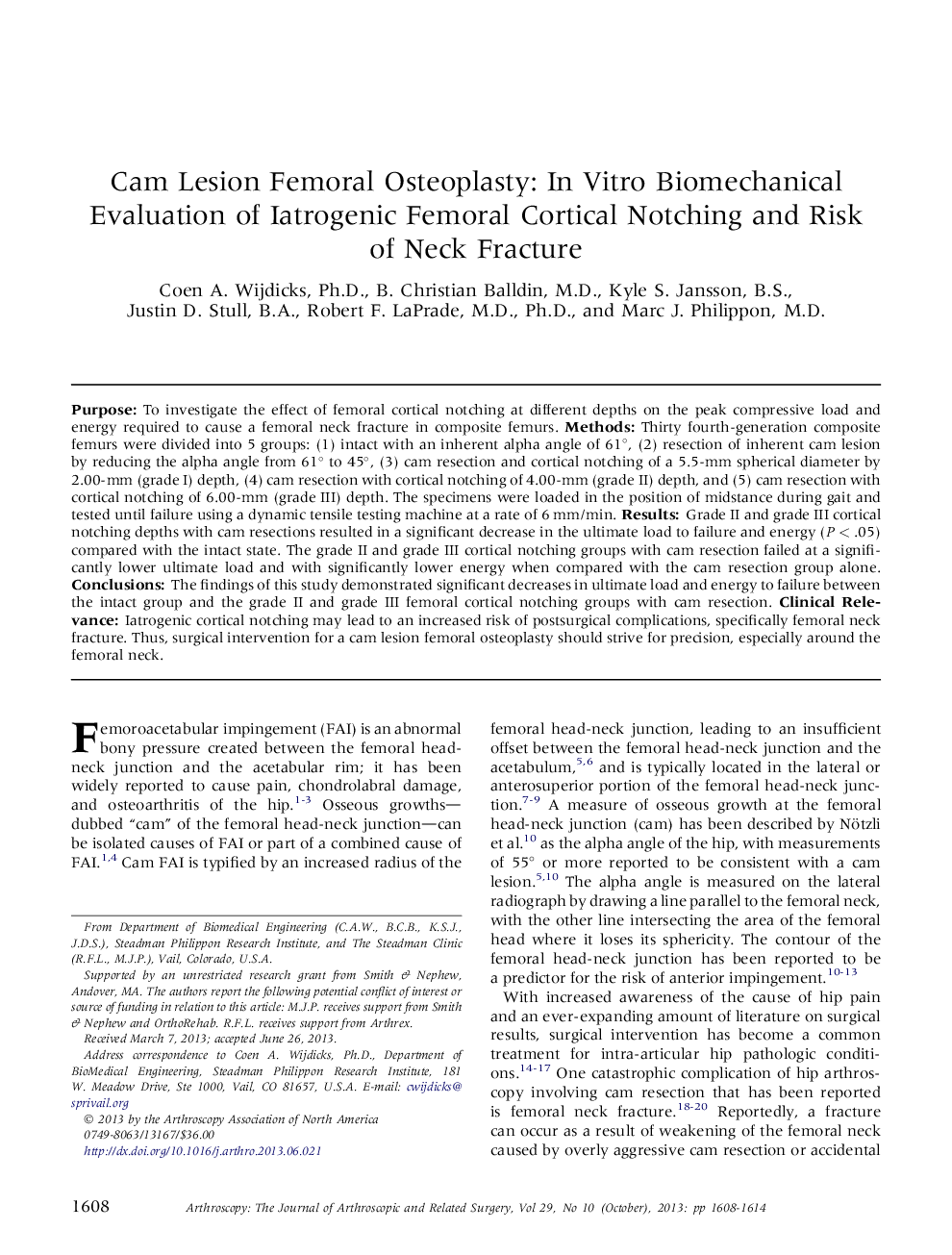| Article ID | Journal | Published Year | Pages | File Type |
|---|---|---|---|---|
| 4043045 | Arthroscopy: The Journal of Arthroscopic & Related Surgery | 2013 | 7 Pages |
PurposeTo investigate the effect of femoral cortical notching at different depths on the peak compressive load and energy required to cause a femoral neck fracture in composite femurs.MethodsThirty fourth-generation composite femurs were divided into 5 groups: (1) intact with an inherent alpha angle of 61°, (2) resection of inherent cam lesion by reducing the alpha angle from 61° to 45°, (3) cam resection and cortical notching of a 5.5-mm spherical diameter by 2.00-mm (grade I) depth, (4) cam resection with cortical notching of 4.00-mm (grade II) depth, and (5) cam resection with cortical notching of 6.00-mm (grade III) depth. The specimens were loaded in the position of midstance during gait and tested until failure using a dynamic tensile testing machine at a rate of 6 mm/min.ResultsGrade II and grade III cortical notching depths with cam resections resulted in a significant decrease in the ultimate load to failure and energy (P < .05) compared with the intact state. The grade II and grade III cortical notching groups with cam resection failed at a significantly lower ultimate load and with significantly lower energy when compared with the cam resection group alone.ConclusionsThe findings of this study demonstrated significant decreases in ultimate load and energy to failure between the intact group and the grade II and grade III femoral cortical notching groups with cam resection.Clinical RelevanceIatrogenic cortical notching may lead to an increased risk of postsurgical complications, specifically femoral neck fracture. Thus, surgical intervention for a cam lesion femoral osteoplasty should strive for precision, especially around the femoral neck.
